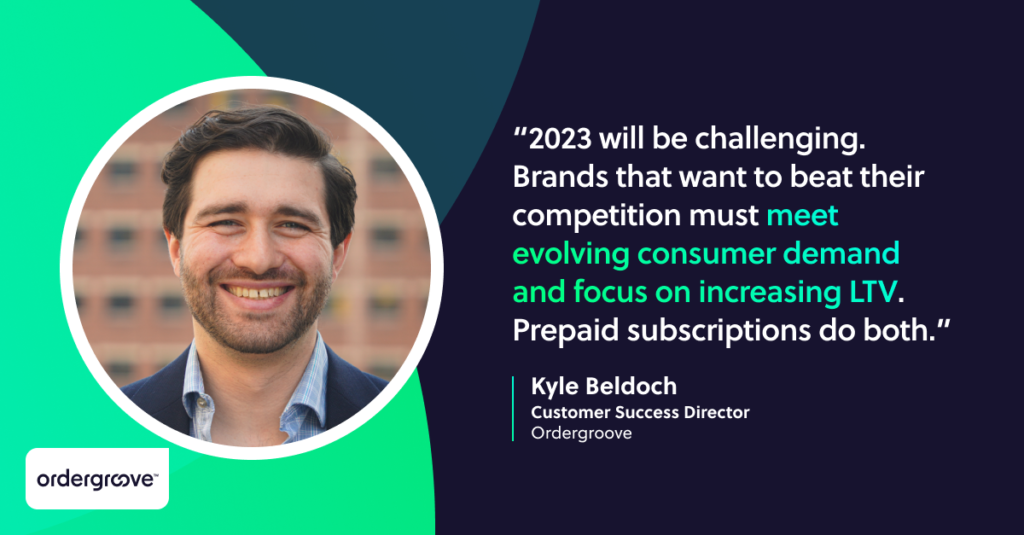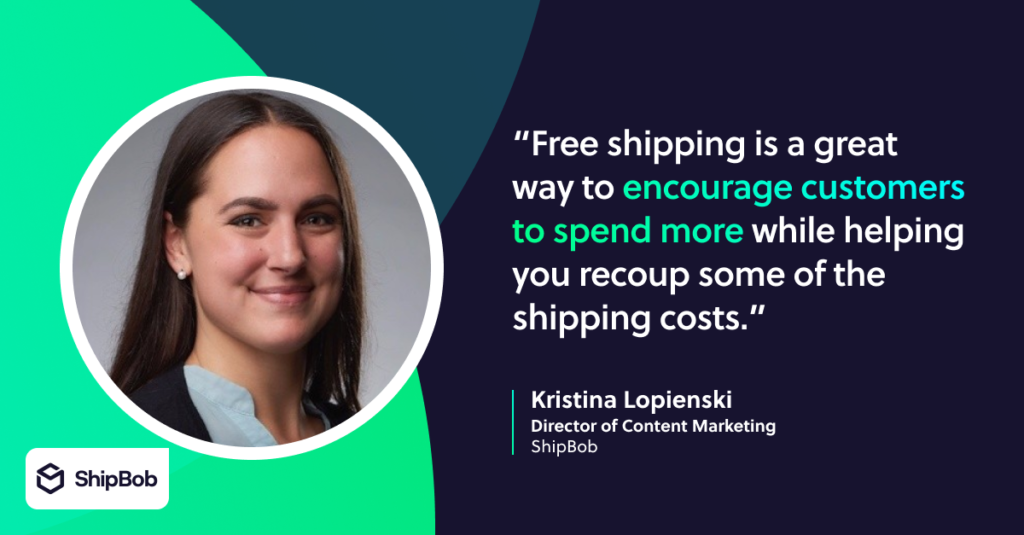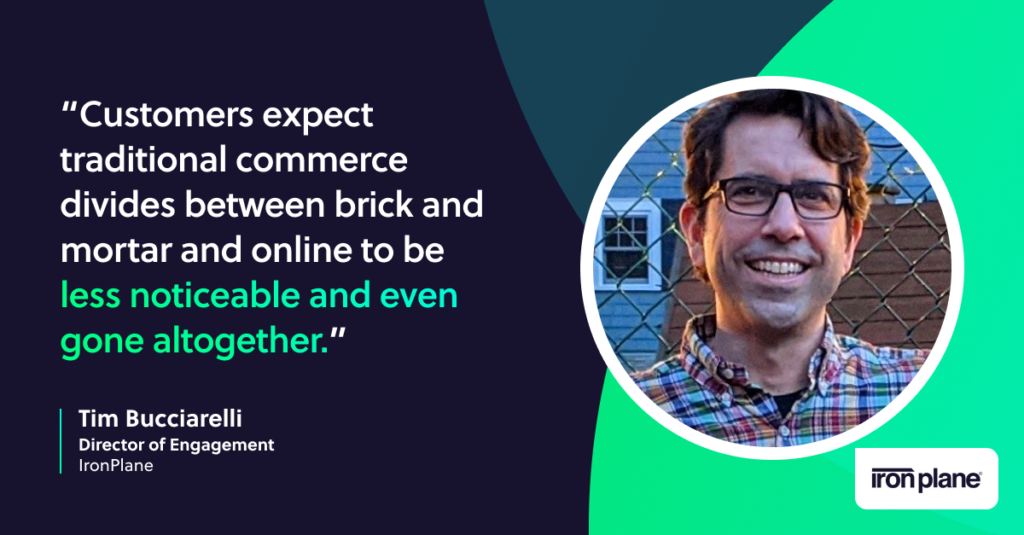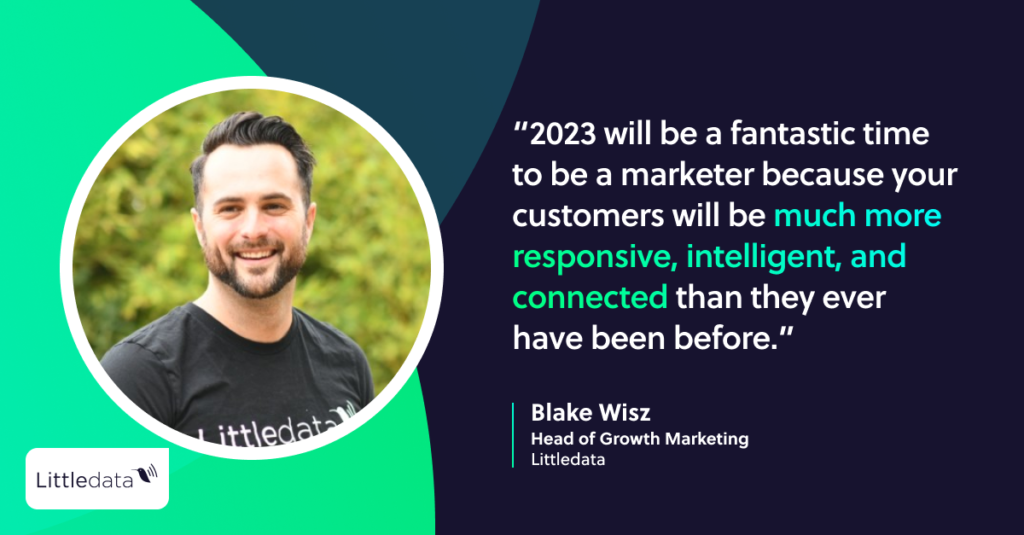Thought Leadership
5 expert-backed eCommerce strategies to win 2023

Consumer behavior is changing rapidly, and eCommerce brands must evolve to keep up. We asked five eCommerce experts to share how brands can adapt to meet shifting consumer expectations and win 2023.
1. Boost LTV with prepaid subscriptions

2022 was challenging for brands, and 2023 will be more so. With inflation rising and consumers losing buying power, shoppers will be on the hunt for cost savings and convenience.
To weather the coming months, eCommerce brands must meet these demands while doubling down on driving higher customer lifetime value (LTV). The best way to do this is by launching prepaid subscriptions.
Prepaid subscriptions allow consumers to subscribe to a product for a longer term in exchange for a steeper discount. Specialty coffee roaster, La Colombe, is a fantastic example. La Colombe enables consumers to prepay for three deliveries and receive an additional 10% off their order. This is on top of an initial 10% discount, free shipping, and early access to La Colombe products.
La Colombe is comfortable doing this because they’re extending their LTV. Ordergroove data shows that prepaid subscriptions, on average, generate four times the LTV of traditional pay-as-you-go subscriptions.
Consumers are also comfortable with prepaid subscriptions because they receive steeper discounts, which are imperative when money is tight, and they’re significantly more convenient than bulk purchasing. One of the challenges of bulk buying is finding a place to store extra products. A hall closet can only hold so many extra paper towels. With prepaid subscriptions, the brand keeps the product and sends it to subscribers once a month (or on the cadence the subscriber selects), so they don’t have a storage problem.
There is another significant benefit for brands, as well. Prepaid subscriptions build business resilience by driving upfront, predictable, and repeatable revenue. Because of this, brands with prepaid subscriptions are better able to forecast.
Additionally, prepaid subscriptions offer alternate paths for subscription enrollment, enabling brands to meet consumers where they are in their relationship with the brand. For instance, new subscribers can enroll in monthly subscriptions and experience the product before entering a long-term agreement.
I want to make a final point about product effectiveness and customer satisfaction. Prepaid subscriptions work exceptionally well for products that need regular use. For this reason, nutraceuticals, vitamins, food, beverage, pet supplies, and cosmetics should adopt this subscription model. Elysium sells supplements and is an excellent example of this concept in practice.
2023 will be challenging. Brands that want to beat their competition must meet evolving consumer demand and focus on increasing LTV. Prepaid subscriptions do both.
– Kyle Beldoch, Customer Success Director, Ordergroove
2. Double down on retention to earn lasting customer loyalty

A recent Yotpo survey of more than 2,000 consumers showed that more than 51% of them were spending less due to economic uncertainty. In 2023, we expect shoppers to be more discerning about where they spend their money, and brands will have to work harder to convert them.
That same survey showed that though respondents are spending less overall, 82% of them still plan to buy from their favorite brand. If brands want to meet the challenges of 2023, they’ll need to double down on retention to earn lasting customer loyalty.
How do you improve retention? Implementing or expanding a loyalty program or subscription offering is an effective way to keep customers coming back. And SMS marketing provides a direct channel for you to connect with your customers wherever they are, so you can foster engagement and keep your brand top of mind.
Another area brands should consider when building a retention strategy is leaning into brand values. Yotpo research shows that more than 84% of global respondents are more inclined to buy from a brand whose values align with their own, and that number is even higher for Gen Z – over 90%. Communicating what your brand stands for is key to building an emotional connection with your customers and turning first-time shoppers into loyal brand advocates.
– Connor Peay, Enterprise Partner Manager, Yotpo
3. Offer free shipping and fulfill orders in more countries

While the world is keeping an eye on a potential looming recession, consumers will be looking for ways to save. A common place they’ll do this is in shipping costs. Free shipping (for minimum spend thresholds well over your AOV) is a great way to encourage customers to spend more while helping you recoup some of the shipping costs, but most brands only offer free shipping for domestic orders (unsurprisingly, because international shipping is much more expensive than domestic shipping). One way brands can respond to their customers in other countries is by fulfilling orders in more countries.
In a 2022 ShipBob survey, we found that nearly 56% of eCommerce brands planned to either ship to new countries in 2022 or fulfill orders in new countries. From that breakdown, nearly 32% planned to start physically fulfilling orders in new countries in 2022.
Being a global logistics company with fulfillment centers in six of the biggest eCommerce markets in the world, we have great visibility into our customers doing just this. We’ve seen brands go from shipping from their home country only to sending inventory to our fulfillment centers across the globe (North America, Europe, and Australia) to be fulfilled domestically for more consumers that have already demonstrated great interest in their products when it was still a cross-border shipping experience.
This not only speeds up transit times for more customers but also keeps shipping costs to a minimum while reducing common cross-border delivery issues like orders getting stuck at customs or being returned to sender. This enables more fast, cheap, and easy-to-obtain deliveries for more customers — the trifecta of the post-purchase customer experience.
– Kristina Lopienski, Director of Content Marketing, ShipBob
4. Personalization will become table stakes

2023 will continue the existing shift in expectations and priorities:
- Customers expect traditional commerce divides between brick and mortar and online to be less noticeable and even gone altogether. They expect merchants to be able to handle their needs online and in person with no noticeable reduction in quality of experience.
- Customers will continue to broaden their digital interactions, using various channels for product discovery and purchasing. Traditional centralized realms (e.g., Google, marketplaces, etc.) are slowly being disintermediated with the prominence of these channels that present a more direct relationship between manufacturers and their customers.
Customers will further prioritize relationships with businesses that provide:
- Highly personalized experience for discovery, purchase, and support. A degree of personalization will become table stakes, where customers expect merchants to speak to their individual desires rather than more broadly as a persona.
- Honest social proof remains important – with an emphasis on trustworthiness of the influencer/opinion generator. This also overlaps with greater relevance of truth in advertising and truth in messaging. This is especially true when it comes to sustainability, sourcing, and equity.
- Provide exceptional customer service. In a world of heightened competition, the real challenge is truly setting yourself apart. One primary component that sets many businesses apart today is their customer service. Knowledgeable, easy to reach, responsive, courteous, no hurdles for purchasing or returning/exchanging, etc. Two companies that come to mind in this regard include Chewy and Sweetwater.
– Tim Bucciarelli, Director of Engagement, IronPlane
5. Stay nimble and closely track your attribution data

Customer behavior will change in 2023. It will be a fantastic time to be a marketer because your customers will be much more responsive, intelligent, and connected than they ever have been before. This has brands very excited about the opportunities that exist to acquire new customers and subscribers. And ultimately, over time, increase their loyalty to the brand and LTV.
Because brands will be scrambling to get in front of these new customers, there will likely be an increase in the number of channels brands share and promote their products on, both with organic content and paid ads. While this is not totally new to brands who have built out these channels already, with the current lull in the global economy, budgets will likely stay nimble for the first couple of quarters. In turn, brands and eCommerce managers will need to better understand and allocate their time and budgets to optimizing these channels.
We know at Littledata, brands will need accurate data for attribution and tracking to uncover which channels are working the best for conversions and in determining their ROI. One recommendation we often make is creating a source medium report in Google Analytics 4, as Universal Analytics will be sunsetting in July 2023, in order to have a handy guide for pinpointing the source of your customers.
All in all, our team remains optimistic going into 2023 as more best-in-class apps and tools like Littledata and Ordergroove continue to work together and offer easy-to-use solutions for complex problems DTC brands face every day.
– Blake Wisz, Head of Growth Marketing, Littledata
Each month, Ordergroove asks experts to share their opinions on eCommerce, Relationship Commerce, or subscriptions. If you have a question for our experts or want to be considered for inclusion in future blog posts, email us at hi@ordergroove.com.